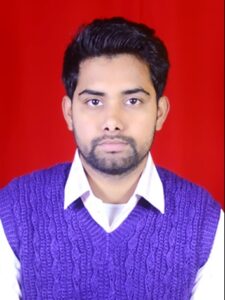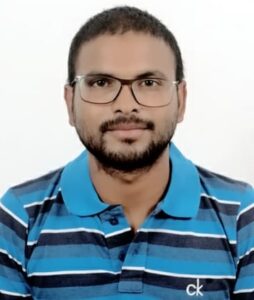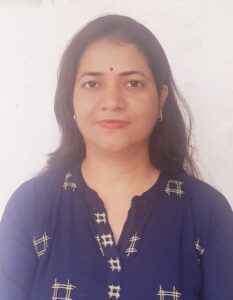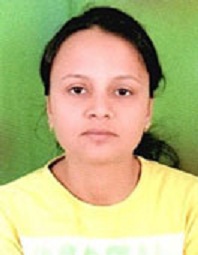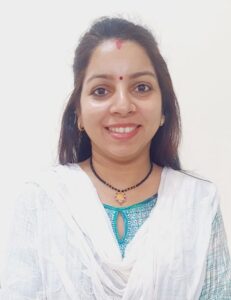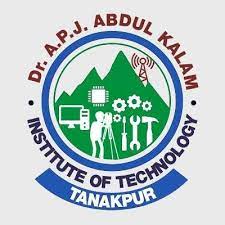Applied Sciences
Department of Applied Sciences
About us:
Department of Applied Sciences at Dr. APJ Abdul Kalam institute of Technology runs courses in Applied Chemistry, Applied Physics, and Applied Mathematics. It helps young minds to understand the fundamental concepts of all the basic sciences that further enhance into wide engineering subjects.
The Applied Science Department is the cornerstone of foundational knowledge, bridging the gap between theory and practical application. It serves as the bedrock upon which students build their understanding of fundamental scientific principles and their real-world implementation in engineering disciplines
It is the nucleus of scientific exploration within the institute encompassing subjects like physics, chemistry, mathematics, and other interdisciplinary fields. Its curriculum is designed to equip students with a deep understanding of scientific theories and principles that form the backbone of engineering. This department houses state-of-the-art laboratories, simulation facilities, and innovative teaching methodologies to facilitate hands-on learning experiences. It aims to inspire, challenge, and empower students to become versatile problem solvers, ready to tackle the complex challenges of today and tomorrow’s world.
Vision:
To attain academic excellence by utilizing cutting-edge methods of teaching and learning practices.
To nurture a community of forward-thinking individuals capable of addressing global challenges through innovative solutions and impart ethical values, leadership skills, and a sense of social responsibility among students.
Mission:
- To provide a comprehensive understanding of scientific principles, fostering critical thinking and problem-solving skills among students.
- 2. To bridge the gap between theory and practice by integrating scientific concepts into various engineering disciplines, enabling students to apply this knowledge effectively.
- To encourage research initiatives that push the boundaries of applied sciences, fostering innovation and technological advancements.
Program Educational Objectives (PEOs)
PEO 1: Attain proficiency in applying scientific principles and methodologies to solve real-world problems in diverse fields within applied science.
PEO 2: Develop leadership skills and effectively collaborate in interdisciplinary teams, demonstrating the ability to lead and contribute to the success of projects and initiatives.
PEO 3: Develop high ethical standards, considering the social and environmental impact of their work, and contributing responsibly to the community.
PEO 4: Attain strong communication skills, capability of conveying scientific concepts and findings to both technical and non-technical audiences through various mediums.
PEO 5: Develop the ability to identify, analyze, and solve complex problems in applied science, fostering innovation and creativity in their professional endeavours.
PEO 6: Professional development opportunities, acquiring additional skills and certifications to enhance their expertise and contribute effectively to their chosen field within applied science.
Program Specific Outcomes (PSOs)
Top of Form PSO 1: Application of fundamental scientific principles and theories to analyze and solve real-world problems in various disciplines.
PSO 2: Develop proficiency in utilizing modern tools, equipment, and techniques relevant to their specific field, such as laboratory instruments, software, and experimental setups.
PSO 3: Develop the ability to think critically and solve complex problems by applying scientific reasoning, analysis, and decision-making skills.
PSO 4: Exhibit competence in integrating knowledge from multiple disciplines within applied science, fostering an interdisciplinary approach to problem-solving.
PSO 5: Communicate scientific concepts and findings effectively through written reports, oral presentations, and visual aids, catering to both technical and non-technical audiences.
PSO 6: Understand and adhere to ethical standards in scientific research and practice, demonstrating professionalism and integrity in their work.
PSO 7: Recognize the importance of lifelong learning and adaptability in the rapidly evolving field of applied science, staying informed about new developments and technologies.
PSO 8: Work effectively in teams, demonstrating the ability to collaborate with diverse groups of professionals to achieve common goals in applied science projects.
S. N. | Name of the Laboratory | Description |
1 | Engineering Physics Lab | To introduce the hands-on descriptions of various physical concepts of optics, mechanics, thermal physics etc with the help of related instruments and devices.
|
2 | Basic Electrical Engineering Lab | To introduce the hands-on descriptions of various concepts of electrical systems and different laws and theorems and to understand the mechanism of DC generator, DC shunt motor, three phase induction motor. |
3 | Basic Electronics Lab | To introduce the hands-on descriptions of various physical & analytical concept of Electronics devices such as diodes, transistors, operational amplifiers and logic gates and their applications. |
4 | Engineering Chemistry Lab | This course will provide, students the practical knowledge of quantitative analysis of materials, different analytical technique of chemistry and instrumental methods for developing experimental skills in building technical competence. |
5 | Programming for Problem Solving Lab | Acquire knowledge about the basic concept of writing a program. Understand the different building blocks of C Language; Learn how to use of conditional expressions and looping statements, Role of Functions, Concept of Array and pointers, Structures and unions. |
6 | Engineering Graphics & Design Lab | Students understand basic knowledge of engineering graphics with using letter writing, different type of scales, lines and dimensions, orthographic projections of points, lines, planes and solids, principle of isometric projection and develop isometric views by different methods.
|
7 | Basic Mechanical engineering Lab | To help students to able to visualize various concepts and perform on different apparatus to gain the practical knowledge in basic mechanical engineering. |
8 | Workshop Technology Lab | To help students to able to prepare simple objects using machines and machine tools. To make students aware of fundamental operations of manufacturing an engineering component, enhance visualization and motivate them to innovate. Manufacturing methods-casting, forming, machining, joining, advanced manufacturing methods , Fitting operations, Study of carpentry tools, equipment’s and different joints, Metal casting, Welding (arc and gas welding) and brazing |
9 | English Language Lab | To facilitate software based learning to provide the required English Language proficiency to students. To acquaint students with specific dimensions of communication skills i.e. Reading, Writing, Listening, Thinking and Speaking. |
10 | Computer Applications and IOT Lab | Solve basic information systems problems using MS Office products appropriate for the solution. Communicate in a business environment using the MS Office product. Understanding DOS commands and Linux programming. Analyze computer hardware, and software. Understanding the concepts of IOT. |
11 | Emerging Technologies in Engineering | To provide brief knowledge about the emerging technologies of present time like 5G technology, cyber security,3D printing, Nano technology. |
12 | Digital Marketing Lab | To understand the applications of Digital Marketing. To apply the tools of Digital Marketing to gain competitive advantage in the Market. To analyze consumer buying behaviour using Web Analytics. |
S.No. | Author Name | Title | Year | Complete Citation |
1 | Mrs. Priyanka Pandey
| A Review on Plasmonics: A new era in the field of nanotechnology
| 2024
| International Journal of Scientific Research in Engineering and Management (IJSREM) volume 8 , issued 01 January 2024 DOI : 10.55041/IJSREM 28334 |
2 | Dr. Abhishek Pathak | Schiff Base Metal Complexes as a Versatile Catalyst: A Review | 2023 | Vijay Kumar Juyal, Abhishek Pathak, Mohit Panwar, Shweta Chand Thakuri, Om Prakash, Akansha Agrwal, Viveka Nand, 2023, J. Organomet. Chem., 122825 |
3 | Mr. Narendra Biswas,. | Frames generated by double sequences in Hilbert spaces | 2023 | Narendra Biswas,Chetna Mehra, Mahesh C. Joshi, , Mathematica Moravica Vol. 27(1) (2023), 53–72. |
4 | Mr. Narendra Biswas | Some Results on d-frames | 2023 | Narendra Biswas, Chetna Mehra, Mahesh C. Joshi, Jnanabha, Vol. 53(1) (2023), 287-292 |
5 | Dr. Jagat Pal Singh | 2023 | Singh, J. P., & Joshi, G. C. (2023). Synthesis and Characterization of Few-Layer Reduced Graphene Oxide Nanosheet by Modified Hummer’s Method. Journal of Nano-and Electronic Physics, 15(2). | |
6 | Dr. Jagat Pal Singh | Biosynthesis of zinc oxide nanoparticles via leaf extracts of Catharanthusroseus (L.) G. Don and their application in improving seed germination potential and seedling vigor of Eleusinecoracana (L.) Gaertn. | 2023 | Mishra, D., Chitara, M. K., Negi, S., Pal singh, J., Kumar, R., &Chaturvedi, P. (2023). Biosynthesis of zinc oxide nanoparticles via leaf extracts of Catharanthusroseus (L.) G. Don and their application in improving seed germination potential and seedling vigor of Eleusinecoracana (L.) Gaertn. Advances in Agriculture, 2023, 1-11. |
7 | Dr. Jagat Pal Singh | Plant growth promoting potential of urea doped calcium phosphate nano particles in finger millet (Eleusinecoracana (L.) Gaertn.) under drought stress. | 2023 | Mishra, D., Chitara, M. K., Upadhayay, V. K., Singh, J. P., &Chaturvedi, P. (2023). Plant growth promoting potential of urea doped calcium phosphate nano particles in finger millet (Eleusinecoracana (L.) Gaertn.) under drought stress. Frontiers in Plant Science, 14, 1137002. |
8 | Dr. Jagat Pal Singh | Investigation on the effect of gamma radiation on structural and optical properties of Mg doped SnO2 nano particles. | 2023 | Bisht, R., Joshi, G. C., & Singh, J. P. (2023). Investigation on the effect of gamma radiation on structural and optical properties of Mg doped SnO2 nano particles. In Proceedings of the sixteenth biennial DAE-BRNS symposium on nuclear and radiochemistry: book of abstracts. |
9 | Dr. Abhishek Pathak | Regimented Charge Transport Phenomena in Semiconductive Self-Assembled Rhenium Nanotubes | 2022 | Arif I. Inamdar, Batjargal Sainbileg, Chi-Jia Lin, Muhammad Usman, Saqib Kamal, Kuan-Ru Chiou, Abhishek Pathak, Tzuoo-Tsair Luo, Khasim Saheb BayikadiKhasim Saheb Bayikadi Khasim Saheb Bayikadi,Raman Sankar, Jenq-Wei Chen, Tien-Wen Tseng, Ruei-San Chen*, Michitoshi Hayashi*, Ming-Hsi Chiang*, and Kuang-Lieh Lu, 2022, ACS Appl. Mater. Interfaces, 10, 12423-12433. (Impact factor 10.383, Citation 1). |
10 | Dr. Abhishek Pathak | Semiconducting a Paddle-Wheel Metal−Organic Complex with a Compact Cu−S Cage | 2022 | Saqib Kamal, Arif I. Inamdar, Kuan Ru Chiou, Abhishek Pathak, Amogne Workie Yibeltal, Jenq-Wei Chen, Wen-Feng Liaw, Michitoshi Hayashi, Batjargal Sainbileg,* Chen-Hsiung Hung,* and Kuang-Lieh Lu, 2022, , J. Phys. Chem. C, 14, 6300-6307. (Impact factor 4.177). |
11 | Dr. Jagat Pal Singh | 2022 | Singh, J. P., & Joshi, G. C. (2022). Structural, Optical and Electrical Properties of rGO@ SnO2 Nano powder Obtained via Chemical Co-precipitation Method. Journal of Nano-and Electronic Physics, 14(1). | |
12 | Dr. Jagat Pal Singh | Tuning of Optical band gap of SnO2 nano particles by gamma ray irradiation and cobalt doping | 2021 | Jagat Pal Singh & G.C Joshi (2021).”Tuning of Optical band gap of SnO2 nano particles by gamma ray irradiation and cobalt doping”. “In: International conference on recent trends in engineering and technology (ICRTET-2021) at Jaipur, India., 12-13 march 2021:206-212 p. |
13 | Dr. Jagat Pal Singh | Effect of gamma ray irradiation on structural and optical properties of SnO2/rGO nano composite-pellets. | 2021 | Jagat Pal Singh & G.C Joshi (2021). “Effect of gamma ray irradiation on structural and optical properties of SnO2/rGO nano composite-pellets”. International journal of creative research thoughts, 9(9): 568-573. |
14 | Dr. Jagat Pal Singh | Nano-fertilizer: The Future of Sustainable Agriculture | 2021 | Dhruv Misha, SupriyaTripathi, Jagat Pal Singh & Ajay Kumar (2021). “Nano-fertilizer:The Future of Sustainable Agriculture”. Agriculture Letters, 2(8): 36-40 |
15 | Dr. Abhishek Pathak | Phosphor-Free Electrically Driven White Light Emission from Nanometer-Thick Barium–Organic Framework Films | 2021 | Saqib Kamal, Krishna Prasad Bera, Muhammad Usman, Batjargal Sainbileg, Shruti Mendiratta, Abhishek Pathak, Arif I. Inamdar, Chen-Hsiung Hung, Michitoshi Hayashi*, Yang-Fang Chen*, and Kuang-Lieh Lu* 2021, ACS Appl. Nano Mater. 4, 2395–2403.( Impact factor 6.140, Citation 5)
|
16 | Dr. Abhishek Pathak | Highly hydrophobic metal–organic framework for self-protecting gate dielectrics | 2020 | Arif I. Inamdar, Abhishek Pathak, Muhammad Usman, Kuan-Ru Chiou, Pei-Hsien Tsai, Shruti Mendiratta, Saqib Kamal, Yen-Hsiang Liu, Jenq-Wei Chen, Ming-Hsi Chiang, and Kuang-Lieh Lu*. 2020,. J. Mater. Chem. A, 8, 11958-11965 (Impact factor 14.511, Citation 16)
|
17 | Dr. Abhishek Pathak | Thermally stable Indium based metal–organic frameworks with high dielectric permittivity | 2020 | Saqib Kamal, Kuan-Ru Chiou, Batjargal Sainbileg, Arif I. Inamdar, Muhammad Usman, Abhishek Pathak, Tzuoo-Tsair Luo, Jenq-Wei Chen, Michitoshi Hayashi, Chen-Hsiung Hung, and Kuang-Lieh Lu*, 2020, J. Mater. Chem. C,8, 9724-9733 (Impact factor 8.067, Citation 6)
|
18 | Dr. Abhishek Pathak | Integration of a (–Cu–S–)n plane in a metal–organic framework affords high electrical Conductivity Nat. Commun.10 | 2019 | Abhishek Pathak, Jing-Wen Shen, Muhammad Usman, Ling-Fang Wei, Shruti Mendiratta,Yu Shin Chang, Batjargal Sainbileg, Chin-May Ngue, Ruei-San Chen, Michitoshi Hayashi, Tzuoo Tsair Luo, Fu-Rong Chen, Kuei-Hsien Chen*, Tien-Wen Tseng*, Li-Chyong Chen* & Kuang-Lieh Lu*. 2019, 1721 (Impact factor 17.694, Citation 104). |
19 | Dr. Abhishek Pathak | Membrane adsorber containing a new Sm (III)–organic framework for dye removal | 2019 | Li-Wei Lee, Szu-Ying Pao, Abhishek Pathak, Dun-Yen Kang*, and Kuang-Lieh Lu*, 2019,. Environmental Science: Nano 6, 2019, 1067-1076 (Impact factor 9.473, Citation 15)
|
20 | Dr. Abhishek Pathak | High-κ Samarium-Based Metal–Organic Framework for Gate Dielectric Applications ACS Appl. Mater. Interfaces | 2017 | Abhishek Pathak, Guan Ru Chiou, Narsinga Rao Gade, Muhammad Usman, Shruti Mendiratta, Tzuoo-Tsair Luo, Tien Wen Tseng, Jenq-Wei Chen, Fu-Rong Chen, Kuei-Hsien Chen*, Li-Chyong Chen*, and Kuang-Lieh Lu*, 2017, 21872- 21878 (Impact factor 10.383, Citation 13). |
21 | Dr. Abhishek Pathak | Illicit Drugs and their Assessment: A Brief Review | 2012 | Ajit. Joshi * , Abhishek Pathak , Asheesh Kumar, 2012 Res. J. Forensic Sci. 1, 8-14.
|
22 | Mrs. Anjna Kothari | Fuzzy controller design for inertially stabilised platform | 2012 | Anjna Kothari Gaur & Rajesh Kumar ,National Conference on Future Aspects of Artificial intelligence in Industrial Automation (NCFAAIIA 2012) Proceedings published by International Journal of Computer Applications® (IJCA) |
23 | Dr. Abhishek Pathak | Heroin: Assessment of use and abuse: A Review | 2011 | Asheesh Kumar , Abhishek Pathak , S. K. Starling* 2011, Der Chemica Sinica, 2, 46-51. (Impact factor 0.676)
|
S. NO. | ROLL NO. | NAME |
BRANCH
|
1 | 231620104001 | DEEP CHANDRA NAUTIYAL | ME |
2 | 231620104002 | DIPANSHU CHAUHAN | ME |
3 | 231620104003 | MOHD. AREEB | ME |
4 | 231620104004 | VIBHAV GARKOTI | ME |
S. NO. | ROLL NO. | NAME |
BRANCH
|
1 | 231620107001 | HARSHIT SINGH | CIVIL |
| 231620107002 | PRAMOD KUMAR | CIVIL |
2 | 231620107003 | RIYA | CIVIL |
S. NO. | ROLL NO | STUDENT NAME | BRANCH |
1 | 231620101001 | AAKSHI BHATT | C.S.E |
2 | 231620101002 | AASHISH NEGI | C.S.E |
3 | 231620101003 | AAYUSH UPADHYAY | C.S.E |
4 | 231620101004 | ABHISHEK KUMAR ARYA | C.S.E |
5 | 231620101005 | ADNAN | C.S.E |
6 | 231620101006 | AMAN KUMAR | C.S.E |
7 | 231620101007 | AMOL BHANDARI | C.S.E |
8 | 231620101008 | ANJALI | C.S.E |
9 | 231620101009 | ANJALI BURATHI | C.S.E |
10 | 231620101010 | ANKUR KUMAR | C.S.E |
11 | 231620101011 | ANSHIKA RANA | C.S.E |
12 | 231620101012 | ANUJ SINGH | C.S.E |
13 | 231620101013 | ARHAM ALI | C.S.E |
14 | 231620101014 | ARYAN SAXENA | C.S.E |
15 | 231620101015 | ASHISH PUNDIR | C.S.E |
16 | 231620101016 | ASHISH SINGH BORA | C.S.E |
17 | 231620101017 | ASHWANI KUMAR | C.S.E |
18 | 231620101018 | ATHARVA SHUKLA | C.S.E |
19 | 231620101019 | AYUSH KUMAR JHA | C.S.E |
20 | 231620101020 | BHAWANA PAPNAI | C.S.E |
21 | 231620101021 | DEEPAK SINGH LAMGARIYA | C.S.E |
22 | 231620101022 | DEVANSH | C.S.E |
23 | 231620101023 | DIVYA BISHT | C.S.E |
24 | 231620101024 | DIYA | C.S.E |
25 | 231620101025 | HARSHVARDHAN SAH | C.S.E |
26 | 231620101026 | HIMANI GARKOTI | C.S.E |
27 | 231620101027 | JAI PRAKASH SINGH RANA | C.S.E |
28 | 231620101028 | JYOTI RAWAT | C.S.E |
29 | 231620101029 | KABEER RAJ | C.S.E |
30 | 231620101030 | KAPIL JOSHI | C.S.E |
31 | 231620101031 | KARTIK SINGH | C.S.E |
32 | 231620101032 | KARTIK SINGH RAUTELA | C.S.E |
33 | 231620101033 | KARTIKEY NAILWAL | C.S.E |
34 | 231620101034 | KHUSHBU JOSHI | C.S.E |
35 | 231620101035 | KUNAL KUKRETI | C.S.E |
36 | 231620101036 | LUCKEY SHAHI | C.S.E |
37 | 231620101037 | MANISH SINGH BISHT | C.S.E |
38 | 231620101038 | MINAKSHI JYALA | C.S.E |
39 | 231620101039 | MOHIT BHANDARI | C.S.E |
40 | 231620101040 | MONIKA PANDEY | C.S.E |
41 | 231620101041 | NAYAN GOSWAMI | C.S.E |
42 | 231620101042 | NEERAJ KUSHWAHA | C.S.E |
43 | 231620101043 | NIHARIKA NAYAL | C.S.E |
44 | 231620101044 | NITIN PANDEY | C.S.E |
45 | 231620101045 | POOJA ARYA | C.S.E |
46 | 231620101046 | PRASHANK KUMAR | C.S.E |
47 | 231620101047 | PRATYUSH SOOTHA | C.S.E |
48 | 231620101048 | PREM MANDAL | C.S.E |
49 | 231620101049 | PRIYANSHI SHARMA | C.S.E |
50 | 231620101050 | PRIYANSHU GUPTA | C.S.E |
51 | 231620101051 | RISHABH KUMAR | C.S.E |
52 | 231620101052 | RITIKA MAHAR | C.S.E |
53 | 231620101053 | SABUJ GHATAK | C.S.E |
54 | 231620101054 | SAGAR BORA | C.S.E |
55 | 231620101055 | SAMEER SETHI | C.S.E |
56 | 231620101056 | SANCHIT PATEL | C.S.E |
57 | 231620101057 | SANIYA GOSWAMI | C.S.E |
58 | 231620101058 | SHABISTA | C.S.E |
59 | 231620101059 | SHUBHAM RAWAT | C.S.E |
60 | 231620101060 | SHUBHANKAR ARYA | C.S.E |
61 | 231620101061 | SNEHA PANDEY | C.S.E |
62 | 231620101062 | SOMESH RUDOLA | C.S.E |
63 | 231620101063 | SUMIT SINGH DHAMI | C.S.E |
64 | 231620101064 | SURYA PRATAP SINGH BISHT | C.S.E |
65 | 231620101065 | TUSHAR SINGH BISHT | C.S.E |
66 | 231620101066 | VAIBHAV DUBEY | C.S.E |
67 | 231620101067 | VAIBHAV MISHRA | C.S.E |
68 | 231620101068 | VANSH | C.S.E |
69 | 231620101069 | VANSH DOGRIYAL | C.S.E |
70 | 231620101070 | VIDITA TRIPATHI | C.S.E |
71 | 231620101071 | VINITA JOSHI | C.S.E |
72 | 231620101072 | VISHESH DUBEY | C.S.E |
73 | 231620101073 | YOGESH | C.S.E |
74 | 231620101074 | YOGESH KUMAR | C.S.E |
S. NO. | ROLL NO | STUDENT NAME | BRANCH |
1 | 231620122001 | AARENDRA SINGH CHAUHAN | AI&ML |
2 | 231620122002 | ANKIT UPRETI | AI&ML |
3 | 231620122003 | ANUP SINGH | AI&ML |
4 | 231620122004 | ARYAN CHOPRA | AI&ML |
5 | 231620122005 | BHAWANA TIWARI | AI&ML |
6 | 231620122006 | DIVYAM KALONI | AI&ML |
7 | 231620122007 | DIVYANSHI BISHT | AI&ML |
8 | 231620122008 | HIMANSHU GIRI | AI&ML |
9 | 231620122009 | KARAN SINGH BISHT | AI&ML |
10 | 231620122010 | KARTIK PRAJAPATI | AI&ML |
11 | 231620122011 | MOHAN SISODIA | AI&ML |
12 | 231620122012 | MOHIT SAHI | AI&ML |
13 | 231620122013 | PRIYANSHU RAI | AI&ML |
14 | 231620122014 | RAHUL AGARWAL | AI&ML |
15 | 231620122015 | SAKSHAM KUMAR KANNOJIA | AI&ML |
16 | 231620122016 | SANDEEP | AI&ML |
17 | 231620122017 | SARTHAK SINGH BISHT | AI&ML |
18 | 231620122018 | SHIVANI TIWARI | AI&ML |
19 | 231620122019 | SUBHAM CHAND | AI&ML |
20 | 231620122020 | SURBHI ARORA | AI&ML |
21 | 231620122021 | SURYA PRATAP SINGH | AI&ML |
22 | 231620122022 | SWARNIMA RAWAT | AI&ML |
23 | 231620122023 | TARUNESH SINGH MEHRA | AI&ML |
24 | 231620122024 | UTSAV MISHRA | AI&ML |
25 | 231620122025 | VANSHIKA MOHILEY | AI&ML |
26 | 231620122026 | VISHWA VIJAY NEGI | AI&ML |
S. NO. | ROLL NO | STUDENT NAME | BRANCH |
1 | 231620129001 | DISHA SAGAR | R&A |
2 | 231620129002 | KABEER BEDI | R&A |
3 | 231620129003 | MAYANK SINGH RAMOLA | R&A |
S. No. | Course Title | Course Code | L | T | P | Cr. | Course Instructor/Incharge |
1. | Engineering Chemistry/ LAB
| AHT-002/ AHP-002
| 3 | 1 | 2 | 5 | Dr. Abhishek Pathak |
2. | Analytical Mathematics | AHT-005 | 3 | 1 | 0 | 4 | Mr. Narendra Biswas |
3. | Basic Electronics Engg. | ECT-001 | 3 | 1 | 0 | 4 | Mrs. Anjna Kothari Gaur |
4. | Basic Electronics Engg. Lab | ECP-001 | 0 | 0 | 2 | 1 | Dr. Jagat Pal Singh |
5. | Computer Application & IOT | CSP-002 | 0 | 0 | 2 | 1 | Mr. Lalit Mohan Joshi |
6. | English Language Lab | AHP-006 | 0 | 0 | 2 | 1 | Dr. Jagat Pal Singh |
7. | Basic Mechanical Engineering /LAB | MET-001/ MEP-001 | 3 | 1 | 2 | 5 | Mr. Himanshu Shah |
8. | Workshop Practices | MEP-003 | 0 | 0 | 2 | 1 | Dr. Dev Prakash Satsangi |
9. | Emerging Technologies in Engineering | AHP-004 | 0 | 0 | 2 | 1 | Mr. Lalit Mohan Joshi |
10. | Computer Applications and IOT | CSP-002 | 0 | 0 | 2 | 1 | Mr. Lalit Mohan Joshi |
Tech. (1st Year) II Semester
Session: 2023-24 Room No: 23 w.e.f. – 22/01/2024
Period | I | II | III | IV | V | VI | VII | VIII |
Day Time | 9:00-9:55 | 10:00-10:55 | 11:00-11:55 | 12:00-12:55 | 1:00-2:00 | 2:00-2:55 | 3:00-3:55 | 4:00-4:55 |
Monday | AHT-005(L) (NAB) | AHT-002(L) (ABP) | ECT-001(L) (AN) | MET-001(L) (HS) |
L
U
N
C
H | MEP-001()(HS)/ ECP-001()(JPS)(VL)/ CSP-002(P)(LMJ) |
| |
Tuesday | ECT-001(L) (AN) | AHT-005(L) (NAB) | AHT-002(L) (ABP) | MEP-003(T) (DPS) | AHP-004(LMJ)(P1&P2)/ AHP-006(P)(ABP)(LL) |
| ||
Wednesday | AHT-005(L) (NAB) | MET-001(L) (HS) | AHP-002()(ABP)/ AHP-006()(JPS)(LL)/ MEP-003(P)(DPS) | AHP-006(P1)(JPS)(LL)/ MEP-001()(HS)/ AHP-004(P)(LMJ) |
| |||
Thursday |
| MET-001(L) (HS) | AHT-005(T) (NAB) | ECT-001(L) (AN) | CSP-002()(LMJ)/ MEP-001(P)(HS) |
| ||
Friday | AHT-002(L) (ABP) | MET-001(T) (HS) | ECT-001(T) (AN) |
| ECP-001 (P1)(JPS)(VL)/ MEP-003(P2)(DPS)/ AHP-002(P)(ABP) |
| ||
Saturday |
| AHT-002(T) (ABP) | MEP-003(P1)(DPS)/ AHP-002()(ABP)/ ECP-001 (P)(JPS)(VL) |
|
| |||
Abbreviations: LL-Lang Lab, VL-Virtual Lab, L-Lecture, T-Tutorial
SUBJECT CODE | SUBJECT NAME | FACULTY NAME | FACULTY CODE |
AHT-002/AHP-002 | Engineering Chemistry/Lab | Dr. Abhishek Pathak | AKP |
AHT-005 | Analytical Mathematics | Mr. Narendra Biswas | NAB |
ECT-001 | Basic Electronics Engineering | Mrs. Anjna | AN |
ECP-001 | Basic Electronics Engineering Lab | Dr. Jagat Pal Singh | JPS |
MET-001/MEP-001 | Basic Mechanical Engineering/Lab | Mr. Himanshu Sah | HS |
MEP-003 | Workshop Practices | Dr. Dev Prakash Satsangi | DPS |
AHP-004 | Emerging technologies in Engineering | Mr. Lalit Mohan Joshi | LMJ |
CSP-002 | Computer Applications and IOT | Mr. Lalit Mohan Joshi | LMJ |
AHP-006 | English Language Lab | Dr. Jagat Pal Singh/ Dr. Abhishek Pathak | JPS/ AKP |
Academic Coordinator In-charge Associate Dean Director


